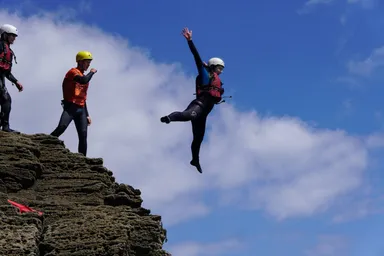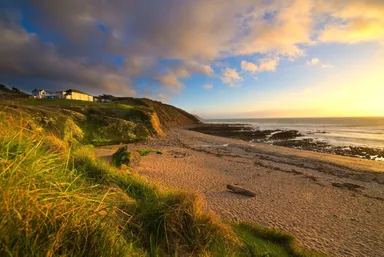Widemouth Bay Surf & Weather Forecast.
Widemouth Bay Surf and Weather Forecast
If you are looking for a surf or weather forecast for Widemouth Bay or Bude, there are many websites to look at. If you are heading for a surf or even just a day out at the beach, then it’s useful to plan ahead and work out when the waves or weather are going to be best.
£ 40 per person
- Surf lessons running daily
- 2 hour session
- equipment hire included
- discount for groups and accommodation guests
Plan ahead
Surf and Weather Forecast for Widemouth bay
When planning your surf session, it is best to think about the best conditions for your local beach, every beach is different and if you aren’t local to our beach, you can always chat to the local lifeguards. Having surfed and run surf lessons for 30 years at Widemouth Bay, we like to think we’ve got it wired! You can check out our guide to Widemouth Bay for a great insight.
We love the website and app called Windy.app and below is an image that shows all the information you need to plan your day at the beach.
How to read a surf forecast
As well as the forecast from Windy.app, which is one that we love to use, there are also some other great websites to give you an idea of the weather and surf. A surf specific website is surfline and then if you are looking for weather and wind, you can check out the met office or BBC weather.
Please find below an explanation of some of the terms used on these websites, hopefully this will help you gain an understanding of them.
Surf/Wave Height
Surf height refers to the size of the breaking waves on the beach/ reef, and it is strongly determined by the topography (shape) of the ocean floor at the individual location. For example, a 10ft swell may produce big hollow waves at an exposed reef, while a nearby beach break may experience smaller, gentler waves from the same swell because of the gradual slope of the sand profile.
On a surf forecast, the surf height can be given in metres or feet, and can be based off of 'traditional height' or 'face height'. The traditional height measures from the back of the wave to the top, whereas face height is from the front (i.e. trough to peak). There's no real 'better' option regarding which way you prefer to read the wave height, however you should be aware that the face height will always be slightly larger than tranditional height as the trough (bottom) of a wave will be lower than the still water line, which is where the back of the wave sits, as shown below:
TOP TIP: It's important to note that the wave height given on a surf forecast is an average, meaning this number doesn't indicate that every wave will be identical in height for the entire session. "Clean up sets" or "rogue waves" are waves that can up to double the typical height of the waves during a set period, so if you're looking at a 4-5ft day, be aware that a few 6ft+ waves could come through and be sure to know your limits and be safe out in the water.
Swell/Waves Period
The swell period is the time between each successive wave, given in seconds. The longer the period, the more poweful (and generally better!) the wave quality will be. A longer period can also make the paddle out easier, as you'll find yourself needing to get through less whitewater. Shorter period times can often result in messy, choppy waves thast make both the paddle out a bit trickier, and also make catching the waves themselves more complicated, as you'll have less time to prepare between each wave.
TOP TIP: The swell period also affects the height of the waves. For example, one day you surfed 3ft @8 seconds and today it's 3ft @ 15 seconds, todays waves have an extra 7 seconds to travel uninterupted, allowing them to generate more energy, which forces more water upwards, resulting in larger waves!
Wave Energy
Often overlooked by novice surfers, the wave energy (in kilo Joules, kJ) indicates how much power the incoming waves will have, and is arguably one of the more important factors to consider when checking the forecast! The wave energy combines the predicated wave height will the swell period (i.e. big waves + long period = greater energy) to provide a value for how much force will be behind the breaking waves that day.
This is important to consider as a 2ft @ 20s day can produce the same wave energy as a 6ft @ 5s day, so looking at the wave height alone may be misleading and cause you to paddle out in conditions that are above your comfort zone.
As a rough guide, 100kJ is about the bare minimum required for waves to be surfable at most breaks, while 200-1000kJ should produce increasingly powerful, but definitely surfable conditions. Wave energy in the 1000-5,000+ range can produce very heavy surf conditions, and potentially dangerous conditions, especially for beginners or those unfamiliar with navigating bigger swell.
TOP TIP: To better understand your personal comfort zone, check the forecast on days you felt the power of the waves was manageable for your level and make a note of the 'KJ' value, then look out for similar conditions on future sessions.
Swell Direction
The swell direction indicates the direction from which waves are headed towards land. It can be expressed in degrees, however you'll most often find it written as cardinal points (N/S/E/W). Understanding which direction the beach you plan to surf is facing, and which direction the swell is coming from, is important to understand how the two will interact and what you can expect from the surf that day.
EXAMPLE: the beach you want to surf faces west, and is protected by a large headland to the north. A large northernly swell may still be surfable here, as the headland will protect the ebach from the brunt of the swell and cause the waves to taper around the headland. This will make the waves smaller and more mellow, and more accessible to surf!
Wind Direction
Waves are generated by wind, be it local or far away storms out at sea. That being said, wind giveth, wind taketh away. If the wind is blowing in the wrong direction, it can negatively impact the surf. The most common example of this is onshore winds (in which the wind is blowing towards land, from out at sea) whcih often produces choppy, poor-quality waves. Alternately, offshore wind generally creates higher-quality surf as it can hold the wave face up for longer before the wave breaks, which allows for a longer, cleaner ride and more wave face to play with.
That being said, regardless of wind direction, the speed/ strength of the wind can have the greatest impact of all. Whether the wind is on- or off-shore, if it is blowing over 20mph it will make catching waves tricky, so generally a low wind speed will produce the most favourable surf conditions.
TOP TIP: Generally speaking, wind conditions are better in the morning because air circulation is driven locally by the sun heating up the earths surface, which occurs as the day goes on!
Tides
The tides are impacted directly by the phases of the moon. Full moons and new moons cause something called a 'spring tide', in which the distance between the high and low tide is at it's largest. This is a result of the gravitational pull of the sun and the moon working in tandem. On the other hand, during the quarter moon phases we experience 'neap tides' (as the sun and the moon are no longer in alignment), which causes the distance between the high and low tide to be much smaller.
As well as the monthly tidal cycle, during any given day the ocean will move through two high tides and two low tides. Depending on the break, sometimes high tide will be favourable for conditions, sometimes low, and often mid tide when the tide is pushing or pulling produces the best waves, particularly for novice to improver surfers.
How these factors impact your local break depends on the individual characteristics of the beach. For example, a beach laying against a cliff face or man-made wall may become unsurfable on a high spring tide, as the water will reach the verticle wall and waves will break into it's surface.
At Widemouth Bay, mid tide is generally the most favourable tide to surf (two hours either side of high tide/ low tide). This is because the waves are breaking over the flattest section of the beach, causing the waves to peel gently, which is ideal conditions for learning!
other activities
Check out what else
we're good at.
Planning a gathering?
Speak to the team so we can tailor your event.
get in touch. 👋


